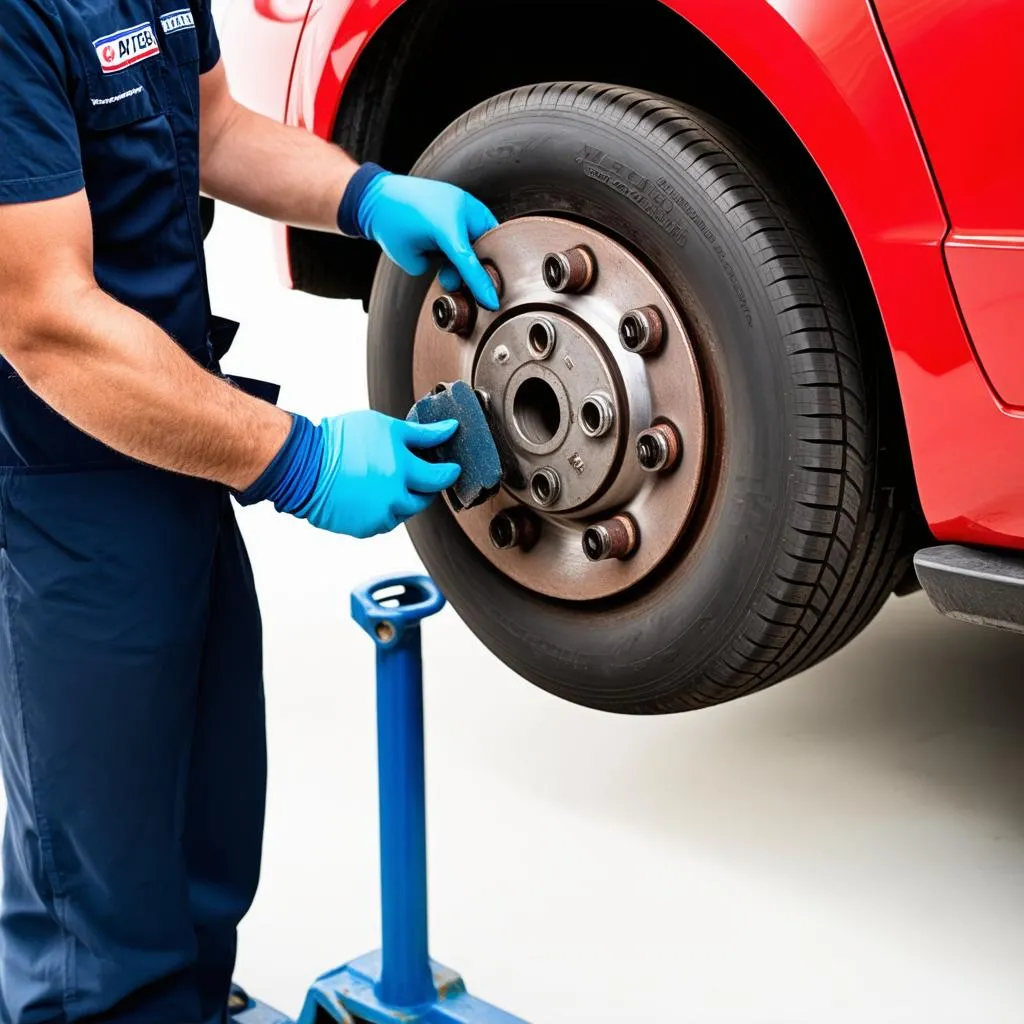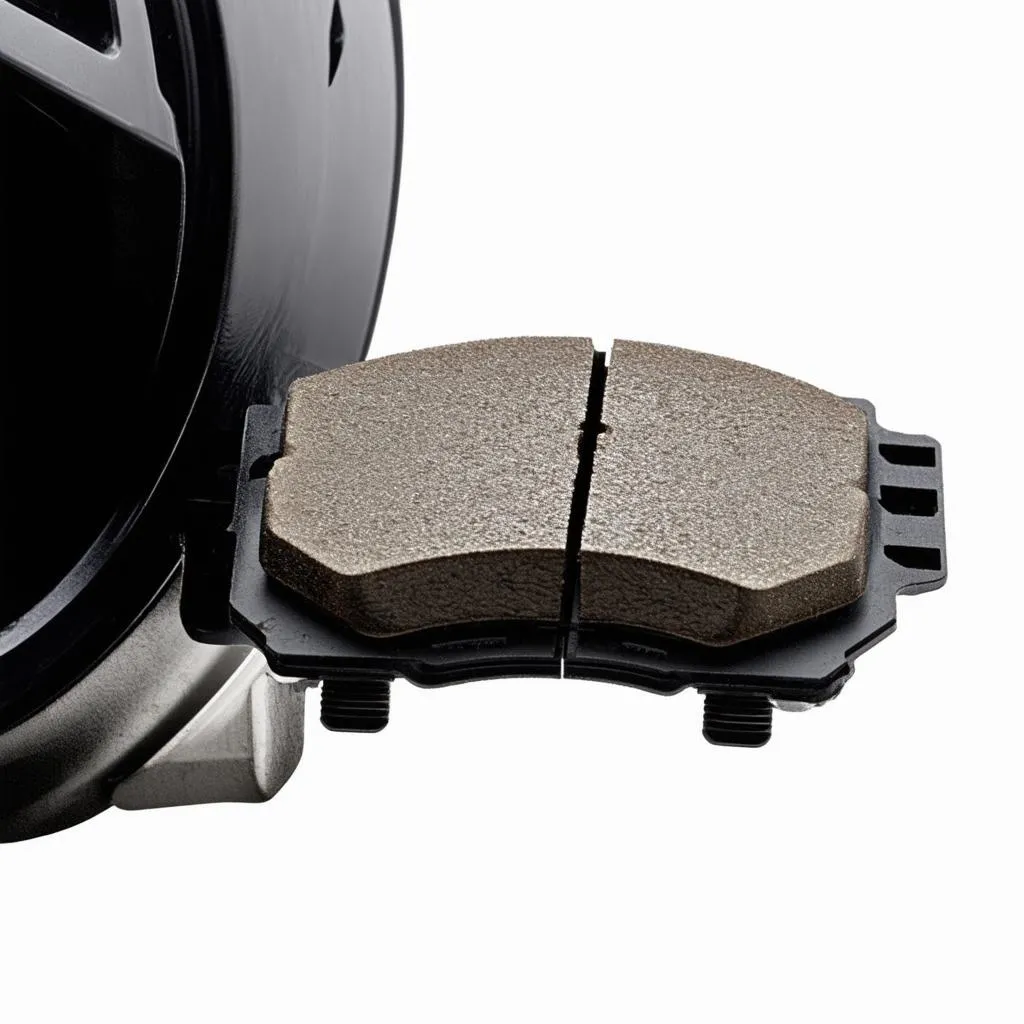Hearing a squeal when braking? Does your car pull to one side when braking? Or does your brake pedal feel spongy? Then it might be time for a rear brake pad replacement! Don’t worry – with a little DIY skill and our guide, you can do it yourself.
“Rear brakes often wear slower than the front ones,” explains master mechanic Markus Schmidt from Berlin. “Nevertheless, you should have the brake pads checked regularly to ensure you’re safe on the road.”
Replacing Rear Brakes: What Does That Actually Mean?
“Replacing rear brakes” sounds more complicated than it is. Simply put, it means replacing the brake pads on your car’s rear axle. These pads wear down over time as they create friction to slow the vehicle when braking.
Step-by-Step Guide: Easy Rear Brake Replacement
Before you start, make sure you have all the necessary tools and replacement parts ready.
What You Need:
- Jack
- Lug wrench
- Screwdriver
- Torque wrench
- New brake pads
- Brake paste/grease
- Optionally, new brake discs/rotors
Here’s How:
- Secure the vehicle: Park your car on a level surface and engage the handbrake. Loosen the lug nuts on the rear wheels slightly.
- Raise the vehicle: Position the jack at the designated jacking point and raise the vehicle until the rear wheel hangs freely.
- Remove the wheel: Unscrew the lug nuts completely and remove the wheel.
- Inspect the brake system: Check the brake discs/rotors for damage, such as deep grooves. If the discs are heavily worn, you should replace them as well.
- Loosen the caliper: Loosen the caliper bolts with a screwdriver or box wrench.
- Remove old brake pads: Take the old brake pads out of the caliper. Be careful not to let the caliper hang from the brake hose.
- Push back the caliper piston: Carefully push the caliper piston back. There are special tools for this, but a C-clamp can also work.
- Insert new brake pads: Insert the new brake pads into the caliper. Pay attention to correct positioning.
- Mount the caliper: Reattach the caliper to the wheel bearing housing. Tighten the bolts to the specified torque.
- Install the wheel: Put the wheel back on and tighten the lug nuts by hand.
- Lower the vehicle: Lower the vehicle using the jack and tighten the lug nuts to the specified torque.
- Bed in the brakes: Before hitting the road again, you should carefully bed in the new brakes. Drive slowly several times and brake gently during this process.
 Detailed view of rear brake assembly during pad replacement
Detailed view of rear brake assembly during pad replacement
Replacing Rear Brakes: Save Money by Doing it Yourself
Of course, you can also have the brake pad replacement done at a workshop. However, the costs for this can quickly run into several hundred Euros. By doing it yourself, you not only save money but also get to know your car better.
Frequently Asked Questions About Rear Brake Pad Replacement:
- How often do I need to change the rear brake pads?
This depends on your driving style and the operating conditions of your car. On average, the rear brake pads should be changed every 30,000 to 50,000 kilometers. - Can I change the rear brake pads myself?
Yes, with some DIY skill and the right guide, changing rear brake pads is also feasible for hobby mechanics. - How much does a rear brake pad replacement cost in a workshop?
The cost for a rear brake pad replacement in a workshop varies depending on the vehicle model and the workshop’s hourly rate. On average, you can expect costs between 150 and 300 Euros.
 Set of new replacement brake pads
Set of new replacement brake pads
Conclusion: Replacing Rear Brakes – Safety First!
Functional brakes are essential for your safety on the road. Therefore, do not hesitate to have your car’s brakes checked regularly and replace the brake pads if necessary. If you feel confident changing the brake pads yourself, you can save money with our guide while getting to know your car better. If you are unsure, we recommend having the brake pad replacement done by a specialist workshop.
Do you have questions about “Replacing Rear Brakes” or need support with your car repair?
Feel free to contact us! Our experts at AutoRepairAid are here to help you with advice and assistance.
You can find more interesting articles about car repair on our blog:
We look forward to hearing from you!

